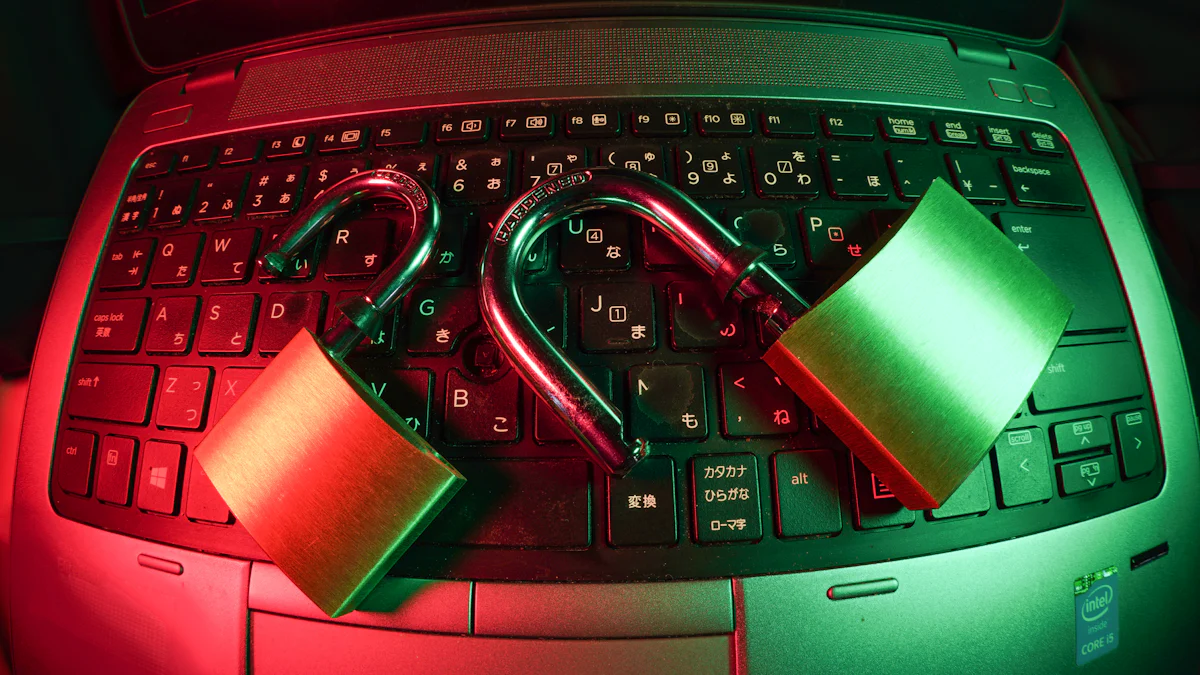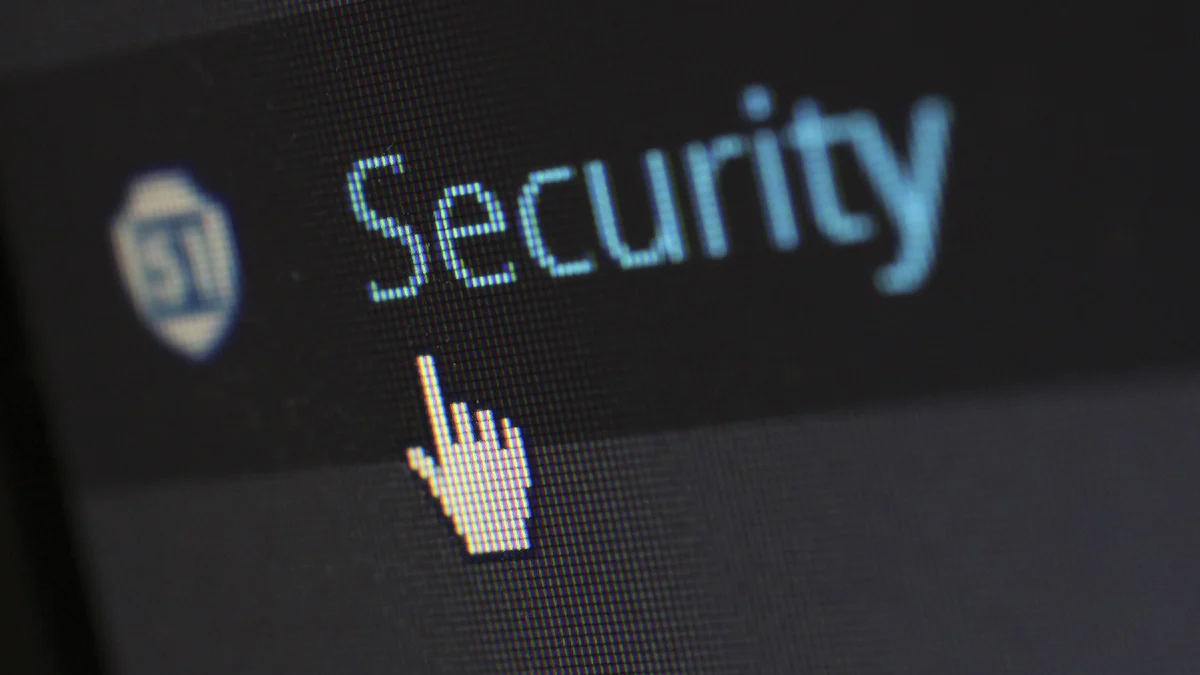The Growing Threat of Data Breaches for Influencers

Social media platforms have become a goldmine for hackers, especially when targeting influencers. Every month, around 3,500 data breach cases are reported, with platforms like Snapchat and LinkedIn being frequent targets. In 2024, 8% of social media hacks affected Snapchat users, while 13% targeted LinkedIn accounts. Hackers also exploited phishing attacks to compromise 5,000 YouTube accounts, costing influencers nearly USD 1.2 million each. The visibility of leaked social media influencers makes them attractive to cybercriminals. Without strong cybersecurity measures, your account could become the next victim. Protecting your online presence is no longer optional—it’s essential.
Why Influencers Are Prime Targets

The Appeal of Leaked Social Media Influencers
The value of millions of followers to hackers
Your large follower base makes you a high-value target for hackers. Accounts with millions of followers hold immense financial and social power. Hackers know that gaining control of your account gives them access to a ready-made audience. They can exploit this audience for scams, advertisements, or even selling the account itself. The more followers you have, the more attractive your account becomes to cybercriminals.
How visibility increases the risk of data theft
As a social media influencer, your visibility works against you in terms of security. Your public presence means hackers can easily gather information about you. They might use details from your posts, such as locations or personal habits, to craft targeted attacks. The more you share online, the easier it becomes for hackers to breach your account. Leaked social media influencers often face these risks because their high-profile status makes them easy targets.
Monetization and Financial Exploitation
Hacking influencer accounts for financial gain
Hackers don’t just want your account—they want your income. By accessing your account, they can steal funds directly from revenue-generating platforms. They might also impersonate you to scam brands or followers. For example, they could request payments for fake collaborations or promote fraudulent products. This not only causes financial losses but also damages your reputation.
The lucrative nature of sponsored content and brand deals
Your collaborations with brands make your account even more valuable. Hackers know that sponsored content and brand deals generate significant income for social media influencers. By taking over your account, they can redirect payments or use your platform to promote their own schemes. This exploitation highlights why protecting your account is crucial.
Trust and Influence Over Followers
Using compromised accounts to scam followers
When hackers gain control of your account, they can use your influence to deceive your followers. They might send fake messages, promote scams, or request money under false pretenses. Your followers trust you, which makes them more likely to fall for these schemes. This not only harms your audience but also damages your credibility.
The ripple effect of lost trust in social media influencers
A single data breach can have long-term consequences for your career. If your followers lose trust in you, they may stop engaging with your content. Brands might also hesitate to collaborate with you, fearing reputational risks. Leaked social media influencers often struggle to rebuild their image after such incidents. Protecting your account is essential to maintaining trust and influence.
Common Methods Used in Social Media Data Breaches

Phishing and Social Engineering
Fake emails and messages targeting influencer accounts
Phishing remains one of the most common methods used in social media data breaches. Hackers often send fake emails or direct messages that appear legitimate. These messages may claim to be from platforms like Facebook, Instagram, or Twitter, warning you about account suspension or security issues. They include fraudulent links that lead to fake login pages designed to steal your credentials.
Some common phishing tactics include:
- Fake security alerts on Facebook prompting you to log in through fraudulent links.
- Direct messages on Twitter warning about account suspension unless you verify your identity.
- Malicious links in Instagram posts disguised as promotions or giveaways.
- Quizzes on Facebook that collect personal information for phishing purposes.
- LinkedIn messages impersonating colleagues with links to phishing sites.
These targeted phishing attacks exploit your trust and urgency, making it crucial to verify the authenticity of any message before clicking on links.
Real-world examples of phishing and manipulation
Hackers often manipulate influencers by exploiting their need to protect their accounts. For instance, you might receive an email claiming unusual activity on your account, urging you to act quickly. By clicking the link, you unknowingly provide your login details to hackers. Such attacks have led to significant data leaks, exposing sensitive information and compromising accounts.
Credential Stuffing and Password Exploitation
The dangers of reused passwords across platforms
Reusing passwords across multiple platforms puts your accounts at risk. If one platform suffers a data breach, hackers can use the leaked credentials to access your other accounts. This technique, known as credential stuffing, is particularly dangerous for influencers with accounts on various services.
The risks associated with reused passwords for influencer accounts include credential stuffing, where hackers use leaked credentials from one site to access accounts on other platforms. This is particularly dangerous for influencers who may have accounts on multiple services. If any of these services suffer a data breach, the reused passwords can lead to account compromise.
How leaked data enables credential theft
Data leaks from one platform often provide hackers with the information they need to exploit your accounts. Once they obtain your credentials, they can hijack your accounts, steal sensitive data, and even lock you out. Using unique passwords for each platform is essential to prevent such attacks.
Malware and Spyware Attacks
The role of malicious software in stealing data
Malware and spyware are powerful tools hackers use to infiltrate your devices. These programs can monitor your activity, capture keystrokes, and steal sensitive information. Hackers often disguise malware as legitimate software or files, tricking you into downloading it. Once installed, the malware can access your social media accounts and other personal data.
Risks of downloading unverified apps or files
Downloading unverified apps or files increases your vulnerability to malware attacks. Hackers often embed malicious software in free apps, plugins, or attachments. For example, downloading an unverified photo editing app could expose your device to spyware. To protect yourself, only download apps and files from trusted sources.
The Consequences of Data Breaches for Social Media Influencers
Reputational Damage
Loss of trust among followers and brands
A data breach can severely harm your brand reputation. When hackers compromise your account, your followers may lose trust in you. They might question your ability to protect their personal information or doubt the authenticity of your content. Brands also value trust. If they see your account as a security risk, they may hesitate to collaborate with you. This loss of trust can take years to rebuild, affecting your ability to grow your audience and secure partnerships.
Long-term career impacts for influencers
The damage from a breach doesn’t stop at lost trust. It can derail your career. Followers who feel betrayed may unfollow you, reducing your reach and engagement. Brands may blacklist you, fearing association with a compromised account. These setbacks can make it difficult to recover your position in the competitive world of social media influencing.
Financial Loss and Account Hijacking
Stolen funds and disrupted sponsorships
Hackers often target your account to steal money. They might access your revenue streams or redirect payments from sponsorships. This disrupts your income and damages your relationships with brands. You could also lose future sponsorship opportunities if brands see your account as unreliable.
Costs associated with recovering hacked accounts
Recovering a hacked account can be expensive. You may face costs such as:
- Ransom payments to regain control of your account.
- Legal fees for investigating the hacking incident.
- Business interruption losses while you cannot earn income.
- Expenses for recreating lost content.
These costs add up quickly, making prevention far more affordable than recovery.
Legal and Privacy Implications
Exposure of personal and sensitive information
A breach often exposes your personally identifiable information. Hackers might leak your address, phone number, or financial details. This puts you at risk of identity theft and harassment. Protecting your personal information is essential to avoid these dangers.
Potential lawsuits and legal challenges
If a breach affects your followers or business partners, you could face lawsuits. For example, if hackers use your account to scam followers, they might hold you responsible. Legal challenges can drain your finances and damage your reputation further. Staying vigilant about cybersecurity helps you avoid these risks.
How Influencers Can Protect Themselves from Data Theft
Strengthening Account Security
Using strong, unique passwords for influencer accounts
Creating strong, unique passwords for your influencer accounts is one of the simplest yet most effective ways to prevent account hacking. Avoid using the same password across multiple platforms. Instead, use a mix of uppercase and lowercase letters, numbers, and special characters. Password managers can help you generate and store secure passwords, reducing the risk of unauthorized access.
Enabling two-factor authentication (2FA) for added protection
Two-factor authentication (2FA) adds an extra layer of security to your accounts. It requires you to verify your identity through a second method, such as a text message or authentication app, before logging in. This makes it significantly harder for hackers to gain access, even if they have your password. Enabling 2FA on all your influencer accounts is a critical step to secure your accounts.
Recognizing and Avoiding Scams
Identifying phishing attempts and suspicious links
Phishing scams often target influencers leaked online. Hackers may send fake emails or messages that appear legitimate, urging you to click on suspicious links. Always double-check the sender’s email address and avoid clicking on links from unknown sources. Be cautious of messages claiming urgent action is required, as these are common tactics used in data theft schemes.
Verifying the authenticity of messages and requests
To verify the authenticity of messages or requests, use data-driven tools to analyze engagement rates and audience demographics. Conduct manual audits of your content and interactions to spot inconsistencies. Cross-platform analysis can also help you confirm the legitimacy of requests by ensuring consistency in your activity across different platforms. These steps can help you avoid falling victim to scams targeting influencer accounts.
Conducting Regular Security Audits
Reviewing account activity and permissions
Regularly reviewing your account activity and permissions is essential to secure your accounts. Check for any unfamiliar logins or apps that have access to your accounts. Remove unused apps or services to minimize vulnerabilities. This proactive approach helps you identify and address potential risks before they lead to a hacked influencer account.
Updating software and removing unused apps
Outdated software can leave your accounts vulnerable to unauthorized access. Keep your devices and apps updated to ensure you have the latest security patches. Delete unused apps to reduce the risk of malware or spyware attacks. These simple steps can significantly enhance your account security and protect you from data theft.
Educating Themselves and Their Teams
Staying informed about cybersecurity best practices
Staying updated on cybersecurity is essential for influencers. Cyber threats evolve constantly, making it critical to adapt and implement effective strategies. You can start by following these best practices for influencers:
- Adopt strong passwords that combine letters, numbers, and symbols.
- Enable two-factor authentication to add an extra layer of security.
- Regularly update your privacy settings to limit unauthorized access.
- Be cautious when granting permissions to third-party applications.
In addition to these steps, consider implementing advanced measures to protect user information. For example:
- Use encryption protocols like SSL/TLS to secure sensitive data.
- Conduct regular cybersecurity audits to identify potential vulnerabilities.
- Train your team members in cybersecurity awareness to reduce risks.
- Only collect necessary sensitive data and delete it when no longer needed.
- Keep all software, operating systems, and security tools up to date.
By following these cyber security practices, you can significantly reduce your vulnerability to cyber threats. Staying informed ensures you remain one step ahead of hackers.
Training team members to recognize and mitigate threats
Your team plays a vital role in maintaining account security. Training them to recognize and respond to cyber threats is a proactive way to safeguard your online presence. Start by acknowledging the risks. Create a coordinated plan with your team to address potential threats effectively.
Real-time monitoring tools can help your team detect suspicious activity. AI alerts provide immediate notifications, but human expertise is crucial for interpreting these alerts. Encourage your team to analyze automated results and distinguish between false alarms and real threats.
Developing risk profiles is another effective strategy. By understanding the individuals behind potential threats, your team can assess the severity of each situation. Once a threat is identified, take appropriate action. Coordinate responses among stakeholders to ensure your accounts remain secure.
Investing in your team’s cybersecurity knowledge strengthens your overall defense. A well-trained team reduces the likelihood of breaches and helps protect user information.
Social media influencers face a growing threat from hackers due to their visibility and financial influence. Hackers use phishing, malware, and password exploitation to target accounts, leading to reputational damage, financial loss, and legal challenges. These breaches can derail your career and harm your followers.
You must take proactive steps to secure your online presence. Limit the personal information you share to reduce risks. Use two-factor authentication, create strong passwords, and conduct regular security audits. Professional security assistance can also safeguard your accounts. Protecting your privacy ensures a safer and more successful digital journey.
FAQ
What makes influencers more vulnerable to cyber attacks?
Your public visibility and large follower base make you a prime target. Hackers see your account as a gateway to financial gain and scams. Sharing personal details online increases your exposure to threats.
How can you identify phishing attempts on your accounts?
Look for suspicious emails or messages with urgent requests. Verify the sender’s identity and avoid clicking on unknown links. Phishing attempts often mimic legitimate platforms to trick you.
What should you do if your account gets hacked?
Act quickly. Change your passwords and enable two-factor authentication. Notify your followers about the breach. Contact the platform’s support team to regain control of your account.
Why is two-factor authentication important for influencers?
Two-factor authentication adds an extra layer of security. Even if hackers steal your password, they cannot access your account without the second verification step. This reduces the risk of threats significantly.
How often should you conduct security audits on your accounts?
Review your account activity and permissions at least once a month. Regular audits help you spot unusual activity and remove unused apps, reducing your vulnerability to cyber attacks.
See Also
Discover How Influencer Whitelisting Benefits Brands And Creators
Essential Steps To Achieve Successful Influencer Whitelisting
Must-Have Influencer Marketing Platforms For 2024 Success
Key Influencer Marketing Trends To Monitor In 2024
Important Influencer Marketing Statistics Every Marketer Should Know
